Scientific explanation
PROMAXCOPPER® and PROMAXSILVER® films/products has intended function of protection of surfaces against physical damages (scratches, deformations, glass breakage), optical (reduces the effects of light on the substrates) and chemical (by creating a physical barrier and limiting the contact with liquids). Copper and Silver disepersed films doesnot kill or inactivate any microbes outside of the product. The information in this page is picked up from research papers, journals and is not based on our products.
A scientific explanation of copper’s effect on virus and bacteria
ON VIRUS
Did you know that the Human Coronavirus survives for up to 3-5 days on materials such as stainless steel, glass, ceramic tile, and plastic? In a research published in The New England Journal of Medicine, it was discovered that the survival time (or half life) and predicted decay time of SARS-CoV-2 on copper was very short.
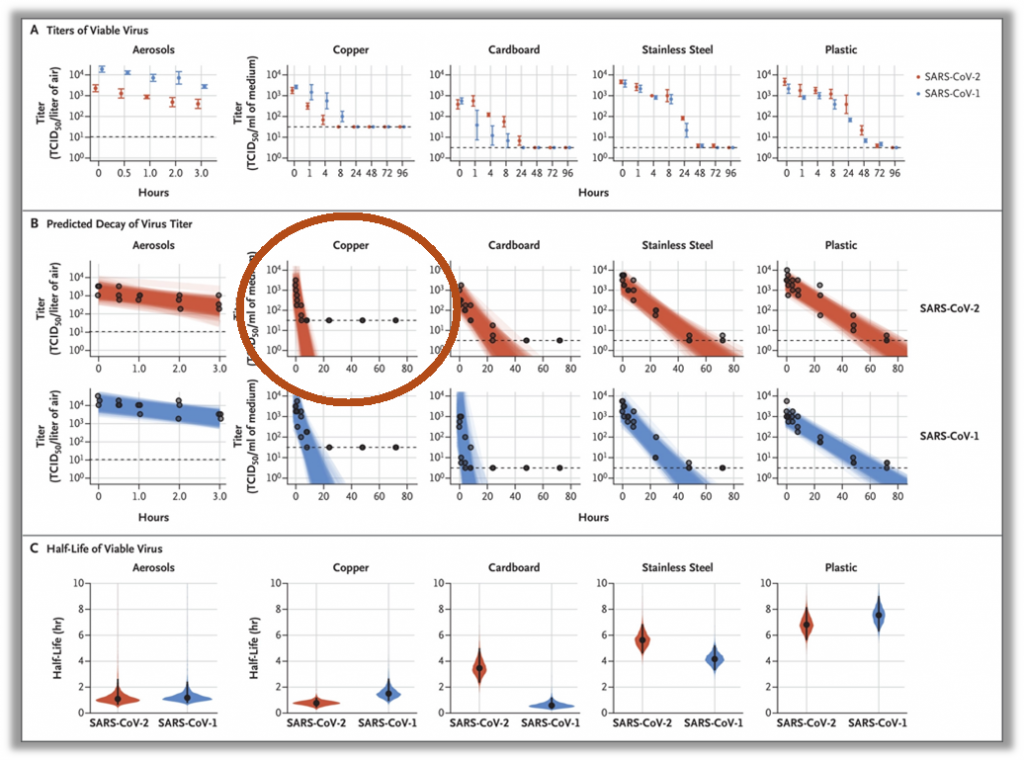
- Scientist from the US-based National Institute of Allergy and Infectious Diseases Hamilton, MT published in The New England Journal of Medicine the survival time of SARS-CoV-2 at various surfaces.
- It was found that especially on copper both the half-life as well as the predicted decay was very short.
- For more information see: April 16, 2020
N Engl J Med 2020; 382:1564-1567 www.nejm.org/doi/pdf/10.1056/NEJMc2004973
ANTI-VIRAL ACTIVITY OF COPPER ON CORONAVIRUS
Antiviral Activity:
- Human Corona 229E & SARS-CoV-2 virus can survive on surfaces made of materials such as plastic, ceramic tile, glass, and stainless steel for 3-5 days.
- However, for inactivation time of virus on a Copper surface is 1 hour. This has been tested by the American Society of Microbiology in 2015.

DEACTIVATION OF VIRUS ON COPPER SURFACE
- “Glycoprotein Spike” has a key role to penetrate & invade the human cell.
- RNA is critical for replication of the virus.
- RNA polymerase facilitates the RNA replication as a catalyst.
- Principle of Antiviral effect of Copper.
- Antiviral Cu acts as an inhibitor
of virus RNA replication.
- Antiviral copper inhibits RNA replication.
- Transcription: Role of the RNA Polymerase.
On Bacteria
ANTI-MICROBIAL ACTIVITY OF COPPER
1. Copper ion infiltrates through the microbial cell-wall
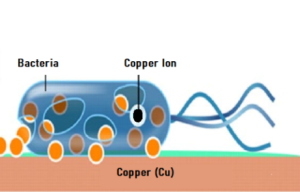
The microbe recognizes the copper ion on the copper surface as essential nutrients. It tries to absorb the nutrients into its cell.
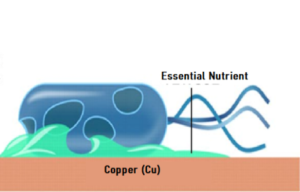
The absorbed copper ion penetrates the microbe’s cell membrane. The cell loses its essential nutrients and water.
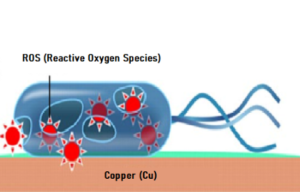
The copper ion pulls the active oxygen through the penetrated hole in the cell membrane. It causes the cell to decay.
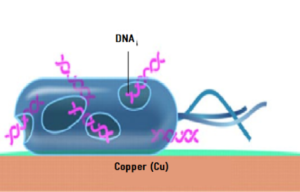
– The microbe suffers from reduced metabolic activity damages the DNA lead to its complete extinction.
– Cell replication and self-replication are suspended.
2
4
3
1




Genome and Plasmid DNA decomposition
Acceleration of cell destruction
– The microbe suffers from reduced metabolic activity damages the DNA lead to its complete extinction.
– Cell replication and self-replication are suspended.
Destruction of cell membrane initiated
The absorbed copper ion penetrates the microbe’s cell membrane. The cell loses its essential nutrients and water.
Copper ion infiltrates through the microbial cell-wall
The microbe recognizes the copper ion on the copper surface as essential nutrients. It tries to absorb the nutrients into its cell.
The copper ion pulls the active oxygen through the penetrated hole in the cell membrane. It causes the cell to decay.

